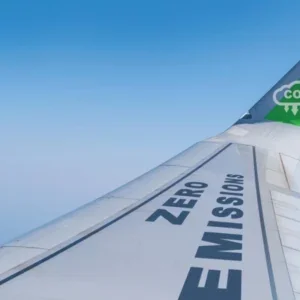The African aviation industry is growing, albeit at a slower pace than other regions globally, thanks to economic worries in countries such as Nigeria, which is heavily reliant on oil revenues, and in Guinea, Liberia and Sierra Leone, which were badly affected by the outbreak of Ebola last year.
Still, despite these setbacks, demand across the continent grew 0.9% in 2014, with capacity up by 3.0%. The potential for better growth is clearly there, with such a large population and many governments across the continent realising the economic benefits of strong air connections.
Questions remain, however, over whether African airlines can keep pace with state-funded carriers from outside the continent, notably the Middle East and Turkey, which are extending their networks across the region. Is their success disruptive to home-grown airlines or can it, in fact, be mutually beneficial?
Whatever the case, the growth of routes throughout Africa can only be a good thing for passengers, with greater choice than ever before. Keith Green, associate at ASM, tells Future Airport how he sees the current African aviation market and what future growth he thinks is likely.
Future Airport: How is the route market evolving in Africa?
Keith Green: The market over the past ten years has seen many positive aviation developments, within Africa itself, and between it and other continents. In the past, the market has been plagued by political instability, regulatory challenges, poor infrastructure and safety concerns.
Governments across the continent are now starting to understand the benefit of air transport and the crucial role air transport plays in driving economic and social development in Africa. This has seen countries opening up their airspace, improving airport infrastructure, and working together with the industry to improve safety and connectivity to the rest of the world.
What role are low-cost carriers playing in this evolution?
Low cost has not had a big impact on the markets in Africa like we have seen in Europe and Asia. Restrictive bilateral agreements and local market characteristics have prevented low-cost carriers from dominating the continent, with the exception of South Africa where, currently, four low-cow cost airlines operate.
We recently covered Ethiopian Airlines’ route expansion plans [see Issue 1 2014], but what other full-service African airlines are growing robustly?
South Africa Airways, Kenya Airways, ASKY, TAAG, Air Mauritius and Air Seychelles continue to extend their intra-Africa networks. The majority of these airlines have narrow and wide-bodied aircraft on order that will be used to grow the presence of their African networks.
Egypt Air is in an unfortunate position due to the political instability that has plagued the country over the past couple of years but should see significant growth plans in the coming years.
How is competition from Middle Eastern carriers and the likes of Turkish Airlines’ aggressive African expansion affecting the continent’s carriers’ growth?
It’s had a negative impact on African carriers’ passenger growth to Europe and the East; however, in the same vein, the Middle Eastern carriers and Turkish Airlines have brought greater connectivity and passenger feed to smaller carriers across the continent. A good example of this is Prosky Zambia, which has a commercial relationship with Emirates that sees the latter providing Prosky with passenger feed to points in Zambia via Emirates’ Lusaka-Dubai service.
How and where is airport infrastructure developing to meet demand?
Addis Ababa and Nairobi have already begun developing new airport infrastructure to meet future passenger and cargo demand. Angola has also announced development of a new airport just outside the city of Luanda to meet future passenger demand, with the majority of funds for all three coming from China.
Airports Company South Africa is also looking at upgrading the current runway at Cape Town International Airport, which will see it able to accommodate A380 and 747-800 aircraft.
How do you see the routes market continuing to expand in Africa over the next decade?
Africa has always been the smallest of the world’s regions [in air traffic terms] but, with a growing middle class, it represents a huge potential market. China is Africa’s biggest trade partner and, going forward, there will be more direct flights and greater frequency to mainland China.
There will be consolidation by the bigger African carriers and possibly a tie-up with the Middle East carriers or Turkish Airlines, the ‘big three plus one’ have extensive growth plans, and I don’t believe the four biggest African carriers – Egypt Air, Ethiopian Airlines, Kenya Airways and South African Airways – will be able to compete.
Should African governments ease up on intra-Africa bilateral agreements, there will be a much bigger presence of low-cost operators offering more intra-Africa flights.






